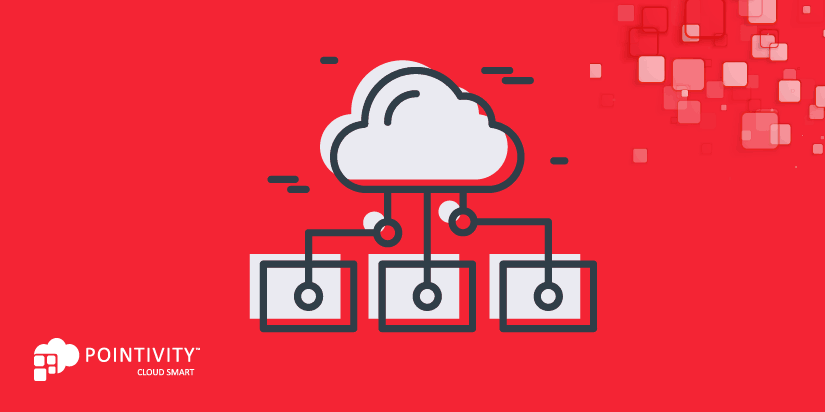Successfully getting to the Cloud requires a clear plan.
Many companies today understand the benefits of migrating to the Cloud. Cost, flexibility, access, storage, and security are just a few of the advanatages. However, when it comes to actually making that migration happen, many companies don’t know where to start. Understanding the benefits and migrating are, after all, two very different things.
Understanding the benefits is just step one. The next step is understanding how those benefits can help you to achieve your business goals and objectives.
How can your company define the relationship between a Cloud benefit and your business goals? By defining a Cloud strategy.
What is a Cloud Strategy?
A Cloud strategy is a game plan for getting to the Cloud. It should that answer three key questions:
- Why do you want to migrate to the Cloud?
- What are your goals after the migration?
- How will the migration unfold from start-to-finish?
The answers to these questions will eventually provide a roadmap for the Cloud migration. This roadmap will show you how your business and IT needs relate and will give you a clear picture of which areas of your business make sense to move to the Cloud and which won’t.
What to include In your strategy
A Cloud strategy typically follows a six-step process that’s meant to flush out every detail a company needs to migrate effectively. The following are six steps to get you to the Cloud:
Step 1: Define your Cloud goals and priorities as they relate to your business objectives
Like any journey, it’s a good idea to know where you’re going before you set off. Similarly, before moving to the Cloud, you should have a clear picture of how you’ll get there and what it will look like when you do.
That’s exactly what this first step sets out to answer. The answers should always tie back to your overall business and IT goals. For example:
- What do we want our Cloud to do for us? Perhaps it’s greater flexibility to scale as needed, or maybe it’s a more agile work environment.
- What applications or business processes need to be moved immediately? What can be deployed at a later date?/li>
This first step is where you’ll take a look at your existing infrastructure to define how ready it is for a Cloud migration.
Step 2: Evaluate the Cloud readiness of your infrastructure and workloads
Next, you’ll need to define the readiness of your existing infrastructure and workloads. In some cases, the transition will be easy. In others, particularly with some legacy infrastructure, the move may be more complicated. A cloud readiness assessment report can be helpful at this step.
A few potential questions to ask yourself include:
- What is the low-hanging fruit? That is, which workloads can be quickly ported to the Cloud?
- What parts of our infrastructure will be difficult to transition to the Cloud? (e.g. legacy software running on outdated hardware or operating systems.)
- What are all the dependencies between nodes and applications within our infrastructure?
- Can we replace any outdated applications with Cloud-ready solutions?

Step 3: Evaluate the risks and challenges of the Cloud
As with any effective strategy, your Cloud strategy should also clearly outline the risks and challenges associated with the migration. Identifying these will help you to better plan and mitigate under or over buying resources.
- What are the greatest challenges of moving your infrastructure and resources to the Cloud? Perhaps it’s a lack of internal resources with adequate experience with the Cloud.
- Are there any risks associated with the migration? For example, are there critical processes that cannot have downtime through the transition? What can be done to mitigate risk to the business?
Step 4: Understand the different types of Cloud environments
Next, you’ll need to decide which kind of Cloud environment is your best option: private, public, or hybrid. Each option brings with it very different benefits for scalability, security, and performance. Deciding which one to go with should be dictated by your business goals and needs.
Say, for example, part of your workload is not suited for the Cloud. In this case, a hybrid Cloud will likely be your best bet as it pairs a Cloud-based server with an on-site server, making it possible to assign your workloads to their most appropriate server type.
Step 5: Define and understand how the move will affect your employees
Like most business changes, moving to the Cloud should be clearly planned and rolled out with your employees in mind. After all, they’re the ones who will be required to use it. During this phase, consider the following:
- Who will be affected by the migration and how? Are there particular groups that will be more affected than others?
- What level of Cloud knowledge and comfort do our employees have? Will any additional training be required?
- Do your employees understand the benefits of the Cloud?
- Have you communicated the plans to your employees and how it will affect them?
- Have you sought their input in the transition?
Step 6: Build and communicate your action plan
By this point, you will have a set of priorities, workload and service candidates, actions, and requirements. Using your responses to the above questions, it’s now time to pull it all together into an actionable strategy. This plan should include key personnel, critical dates, and success measures.
Ready to get started on your Cloud Strategy?
Contact us today for a free cloud assessment report and support for your Cloud migration. Call us at 858-777-6950 or email sales@pointivity.com to get started.









2 Comments